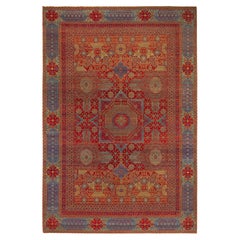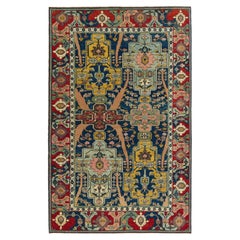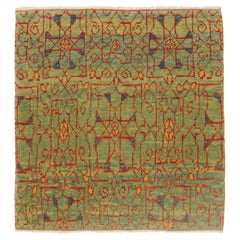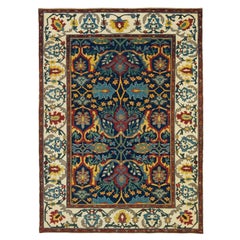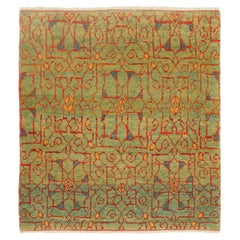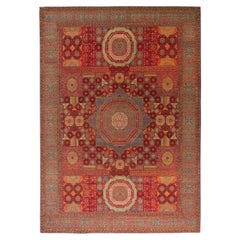Folk Art
21st Century and Contemporary Turkish Revival Folk Art
Wool, Natural Fiber, Organic Material
21st Century and Contemporary Turkish Revival Folk Art
Wool, Natural Fiber, Organic Material
21st Century and Contemporary Turkish Revival Folk Art
Wool, Natural Fiber, Organic Material
21st Century and Contemporary Turkish Revival Folk Art
Wool, Natural Fiber, Organic Material
21st Century and Contemporary Turkish Revival Folk Art
Wool, Natural Fiber, Organic Material
21st Century and Contemporary Turkish Revival Folk Art
Wool, Natural Fiber, Organic Material
21st Century and Contemporary Caucasian Revival Folk Art
Organic Material, Natural Fiber, Wool
21st Century and Contemporary Turkish Revival Folk Art
Wool, Natural Fiber, Organic Material
21st Century and Contemporary Turkish Revival Folk Art
Wool, Natural Fiber, Organic Material
21st Century and Contemporary Turkish Revival Folk Art
Wool, Natural Fiber, Organic Material
21st Century and Contemporary Caucasian Oushak Folk Art
Wool, Organic Material, Natural Fiber
21st Century and Contemporary Turkish Revival Folk Art
Wool, Natural Fiber, Organic Material
21st Century and Contemporary Caucasian Revival Folk Art
Wool, Natural Fiber, Organic Material
21st Century and Contemporary Turkish Revival Folk Art
Wool, Natural Fiber, Organic Material
21st Century and Contemporary Turkish Revival Folk Art
Wool, Natural Fiber, Organic Material
21st Century and Contemporary Turkish Revival Folk Art
Wool, Natural Fiber, Organic Material
21st Century and Contemporary Turkish Revival Folk Art
Wool, Natural Fiber, Organic Material
21st Century and Contemporary Turkish Revival Folk Art
Wool, Natural Fiber, Organic Material
21st Century and Contemporary Turkish Revival Folk Art
Wool, Natural Fiber, Organic Material
21st Century and Contemporary Turkish Revival Folk Art
Wool, Natural Fiber, Organic Material
21st Century and Contemporary Turkish Revival Folk Art
Wool, Natural Fiber, Organic Material
21st Century and Contemporary Turkish Revival Folk Art
Wool, Natural Fiber, Organic Material
21st Century and Contemporary Turkish Oushak Folk Art
Wool, Natural Fiber, Organic Material
21st Century and Contemporary Turkish Revival Folk Art
Wool, Natural Fiber, Organic Material
21st Century and Contemporary Turkish Arts and Crafts Folk Art
Wool, Natural Fiber, Organic Material
21st Century and Contemporary Turkish Revival Folk Art
Wool, Natural Fiber, Organic Material
21st Century and Contemporary Turkish Revival Folk Art
Wool, Natural Fiber, Organic Material
21st Century and Contemporary Turkish Revival Folk Art
Wool, Natural Fiber, Organic Material
21st Century and Contemporary Turkish Revival Folk Art
Wool, Natural Fiber, Organic Material
21st Century and Contemporary Turkish Revival Folk Art
Wool, Natural Fiber, Organic Material
21st Century and Contemporary Turkish Revival Folk Art
Wool, Natural Fiber, Organic Material
21st Century and Contemporary Turkish Oushak Folk Art
Wool, Natural Fiber, Organic Material
21st Century and Contemporary Turkish Revival Folk Art
Wool, Natural Fiber, Organic Material
2010s Turkish Revival Folk Art
Wool, Natural Fiber, Organic Material
21st Century and Contemporary Turkish Oushak Folk Art
Wool, Natural Fiber, Organic Material
21st Century and Contemporary Turkish Revival Folk Art
Wool, Natural Fiber, Organic Material
21st Century and Contemporary Turkish Oushak Folk Art
Wool, Natural Fiber, Organic Material
21st Century and Contemporary Turkish Revival Folk Art
Wool, Natural Fiber, Organic Material
21st Century and Contemporary Turkish Revival Folk Art
Wool, Natural Fiber, Organic Material
21st Century and Contemporary Turkish Revival Folk Art
Wool, Natural Fiber, Organic Material
21st Century and Contemporary Turkish Revival Folk Art
Wool, Natural Fiber, Organic Material
21st Century and Contemporary Turkish Revival Folk Art
Wool, Natural Fiber, Organic Material
21st Century and Contemporary Turkish Revival Folk Art
Wool, Natural Fiber, Organic Material
21st Century and Contemporary Turkish Revival Folk Art
Wool, Natural Fiber, Organic Material
21st Century and Contemporary Turkish Revival Folk Art
Organic Material, Natural Fiber, Wool
21st Century and Contemporary Turkish Revival Folk Art
Wool, Natural Fiber, Organic Material
21st Century and Contemporary Turkish Oushak Folk Art
Wool, Natural Fiber, Organic Material
21st Century and Contemporary Turkish Oushak Folk Art
Natural Fiber, Organic Material, Wool
21st Century and Contemporary Turkish Revival Folk Art
Wool, Natural Fiber, Organic Material
21st Century and Contemporary Turkish Oushak Folk Art
Wool, Natural Fiber, Organic Material
21st Century and Contemporary Turkish Revival Folk Art
Wool, Natural Fiber, Organic Material
21st Century and Contemporary Turkish Revival Folk Art
Wool, Natural Fiber, Organic Material
21st Century and Contemporary Turkish Revival Folk Art
Wool, Natural Fiber, Organic Material
21st Century and Contemporary Turkish Revival Folk Art
Wool, Natural Fiber, Organic Material
21st Century and Contemporary Turkish Revival Folk Art
Wool, Natural Fiber, Organic Material
21st Century and Contemporary Turkish Revival Folk Art
Wool, Natural Fiber, Organic Material
21st Century and Contemporary Turkish Revival Folk Art
Wool, Natural Fiber, Organic Material
21st Century and Contemporary Caucasian Revival Folk Art
Wool, Organic Material, Natural Fiber
21st Century and Contemporary Turkish Revival Folk Art
Wool, Natural Fiber, Organic Material
21st Century and Contemporary Turkish Revival Folk Art
Wool, Natural Fiber, Organic Material
Vintage, New and Antique Folk Art
Folk art refers to a genre of art that shares the creator’s traditions, offering not just an artistic display but an opportunity to learn about a culture. Vintage, new and antique folk art typically reflects a heritage or location. It can include utilitarian objects and handmade art as diverse as weather vanes, portraiture and paintings, carnival art, quilts and duck decoys.
American folk art is frequently valued because of the traditional skills involved, like weaving, hand-carving wood and even stonework. Many folk artists are self-taught, while some train as apprentices within their community. By using available materials and taking a personal approach to their creations, artists ensure each piece is unique and conveys a story. Native American folk art includes functional objects reflecting their heritage, such as baskets, textiles and wooden pieces.
During the Great Depression, artistic materials in America were hard to come by, so artisans used discarded wood from cigar boxes and shipping crates to make highly stylized, notched pieces — most often picture frames and boxes — that are today sought after by collectors. This folk art style is called tramp art and was popular from roughly 1870 until the 1940s.
Folk art brings vibrant culture and traditions into your home. Browse an extensive collection of folk art on 1stDibs.
